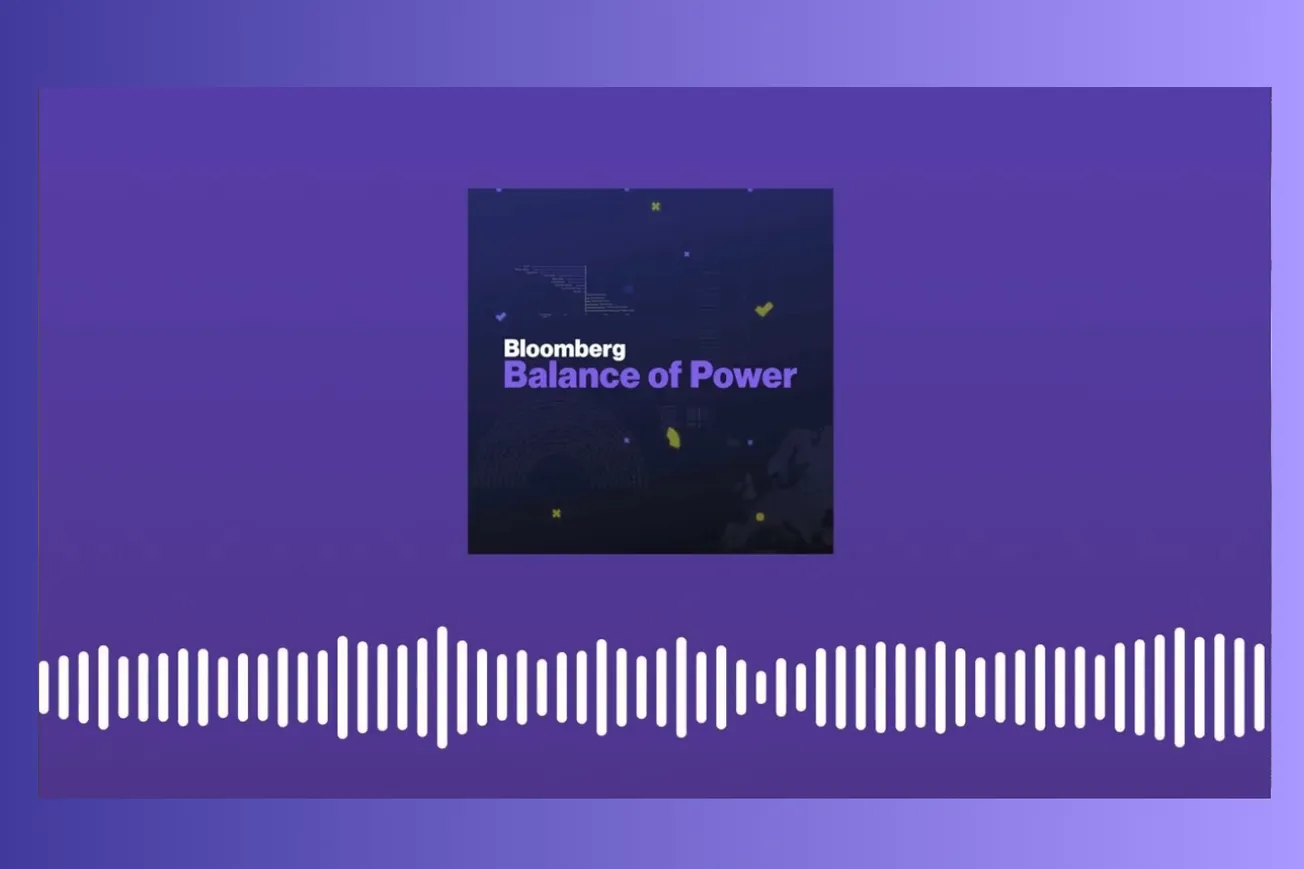Table of Contents
Qualcomm CEO Cristiano Amon discusses semiconductor leadership, autonomous vehicles timeline, AR glasses development, and why his company is essential to connecting billions of smart devices to the cloud economy.
In an exclusive interview, Qualcomm's CEO Cristiano Amon reveals how his Fortune 105 company is positioning itself as the backbone of tomorrow's connected world, from self-driving cars to holographic communication.
Key Takeaways
- Qualcomm processes chips for 26+ global automotive brands, becoming a major automotive technology supplier within a remarkably short timeframe
- Autonomous highway driving could reach mass scale within 5 years, though full autonomy remains 5-10 years away due to regulatory complexity
- The company operates on 4-year development cycles, requiring precise predictions of market needs billions of dollars in advance
- AR glasses resembling regular eyewear could replace smartphones as the next major computing platform within 5-10 years
- Qualcomm's "fabless" model relies entirely on human talent, with no manufacturing facilities of their own
- The CHIPS Act represents $95 billion in US-EU investment to geographically diversify semiconductor production away from Taiwan's 65% dominance
- Digital twins of every physical object will enable predictive maintenance and personalized experiences across industries
- Amon emphasizes being "in a hurry, not impatient" to capture unprecedented technology transformation opportunities
Timeline Overview
- 00:00–05:30 — From Brazil to Silicon Valley: Cristiano's childhood entrepreneurship selling kites and sodas, electrical engineering education, NEC career in Tokyo, and the 1995 Qualcomm recruitment that changed everything
- 05:30–10:00 — The Venture Capital Detour: Leaving Qualcomm for telecom investing, restructuring a bankrupt Brazilian operator, learning crisis management, and the 2004 return to San Diego
- 10:00–15:00 — Beyond Smartphone Chips: Qualcomm's rapid expansion into 26+ automotive brands, IoT devices from Peloton to drones, and becoming the "connected intelligent edge" company
- 15:00–20:00 — The Gladiator Business Philosophy: Why tech success guarantees nothing, 4-year development cycles requiring billion-dollar bets, and the semiconductor supply chain crisis revelation
- 20:00–25:00 — Long-Term Innovation Cycles: Predicting market needs years in advance, 10-year wireless generation cycles, and the cultural DNA of thinking big while executing precisely
- 25:00–30:00 — Autonomous Vehicle Reality Check: Highway autopilot within 5 years, full autonomy in 5-10 years, regulatory challenges, and making assisted driving standard like airbags
- 30:00–35:00 — AR Glasses and Holographic Future: Replacing smartphones with 8K-per-eye displays, metaverse through digital twins, and connecting physical-digital spaces within a decade
- 35:00–40:00 — CEO Time Management: Unrealistic expectations about time demands, global relationship building, maintaining technical depth, and the Mario Andretti racing philosophy
- 40:00–43:00 — Work-Life Integration: Family breakfast rituals, hiring 6,000+ people globally, defining grit as resilience and traction, and loving work so much it doesn't feel like work
From São Paulo to Silicon Valley: An Unlikely Tech Journey
Cristiano Amon's path to leading one of America's most influential tech companies began with selling homemade kites in his Brazilian neighborhood. His first real paycheck came from automating small hydroelectric power plants, combining his electronics passion with his father's traditional electrical engineering background.
The defining moment arrived during a 1995 San Diego business trip representing NEC. Qualcomm made him "an offer he couldn't refuse," launching a 27-year relationship that would see him navigate the company through its most challenging and opportunistic periods. His brief departure for venture capital and telecom restructuring in Brazil only strengthened his eventual return.
Today, Amon oversees a $170 billion market cap company with 45,000+ employees, yet maintains the curious mindset of an engineer who once filled his mother's refrigerator with sodas to sell at premium prices in hot locations.
The Gladiator Business: Why Tech Success Never Guarantees Tomorrow
Amon describes Qualcomm's competitive landscape using a stark gladiator metaphor. In the Colosseum of technology, companies face three outcomes: win, lose, or mutual destruction. Victory only earns the right to fight again tomorrow.
This reality shapes Qualcomm's relentless innovation cycle. Their flagship Snapdragon processors powering Samsung Galaxy devices require four-year development timelines. Teams must accurately predict market needs and consumer behavior years in advance, risking billions if they guess wrong.
The gladiator mentality prevents complacency. Success in smartphones means nothing without continuous reinvention across automotive, IoT, and emerging platforms. Every generation of wireless technology spans roughly 10 years, demanding sustained excellence across multiple product cycles.
The company's "fabless" semiconductor model amplifies this pressure. Without manufacturing facilities, Qualcomm's entire value proposition rests on human talent and intellectual property. During the supply chain crisis, activist investor battles, and regulatory challenges, their people continued delivering 5G technology ahead of schedule.
Connecting the Intelligent Edge: Beyond Smartphone Supremacy
While consumers recognize Qualcomm through Snapdragon processors in premium smartphones, Amon envisions a broader mission. As everything becomes connected and intelligent—from exercise equipment to appliances—Qualcomm positions itself as the essential bridge between billions of edge devices and cloud computing.
The semiconductor supply chain crisis made chips' importance visible to mainstream society. When people couldn't buy cars, appliances, or computers, they finally understood that chips power virtually every modern product. This visibility benefits Qualcomm's expansion beyond mobile devices.
Automotive represents their fastest-growing opportunity. In an extraordinarily short timeframe, Qualcomm now works with 26-27 global automotive brands, providing processors for digital cockpits, cloud connectivity, and assisted driving systems. This diversification reduces dependence on smartphone cycles while positioning the company for the connected car revolution.
The Internet of Things extends Qualcomm's reach into consumer electronics, industrial applications, and enterprise solutions. Their technology powers everything from Peloton bikes to drones, creating recurring revenue streams across multiple industries experiencing digital transformation.
The Road to Autonomous Reality: Managing Expectations and Timelines
Amon provides a nuanced timeline for autonomous vehicle deployment, distinguishing between marketing hype and engineering reality. Highway autopilot at Level 3+ autonomy could reach mass scale within five years, allowing hands-free driving while maintaining driver presence.
Full autonomy—removing steering wheels entirely—faces greater challenges. The final 5% of edge cases will consume disproportionate time and resources compared to achieving 95% reliability. Regulatory frameworks lag technology capabilities, creating additional deployment barriers.
More importantly, Amon reframes the autonomous conversation. Rather than waiting for perfect self-driving cars, the industry should focus on assisted driving systems that prevent accidents. Like ABS brakes and airbags, these safety features should become standard across all vehicles, not luxury car exclusives.
Qualcomm's automotive strategy emphasizes incremental safety improvements over dramatic transformation. Cars constantly monitoring driver behavior and intervening during potential mistakes could eliminate most accidents before full autonomy arrives. This approach prioritizes immediate safety benefits over distant sci-fi scenarios.
The connected car opportunity extends beyond autonomy. Cloud-connected vehicles enable gaming content, real-time telemetry, and personalized experiences. For the first time, automotive manufacturers can maintain ongoing relationships with customers through software updates and digital services.
AR Glasses and the Metaverse: Replacing Smartphones with Superhuman Vision
Amon believes augmented reality glasses will become the next major computing platform, solving smartphones' fundamental screen size limitation. Current processing power and 5G connectivity provide unlimited cloud access, but visual real estate remains constrained.
The technical challenges are surmountable within 5-10 years. Glasses need 8K displays per eye, miniaturized processors with minimal power consumption, and seamless optics. Qualcomm invests heavily in these component technologies while maintaining realistic timelines.
Real-world applications extend far beyond entertainment. AR glasses could instantly identify strangers by searching social media, provide contextual information about any object, and revolutionize education through immersive learning. Enterprise applications include technician training, equipment maintenance guidance, and remote expert assistance.
The metaverse concept centers on connecting physical and digital spaces through digital twins. Every object—from cars to buildings—will maintain cloud-based digital representations updated in real-time. These twins enable predictive maintenance, personalized experiences, and enhanced interaction between physical and virtual environments.
Qualcomm positions itself as the infrastructure provider enabling metaverse functionality. Their processors capture physical world data, their connectivity solutions transmit it to the cloud, and their AI capabilities process information for augmented reality overlay.
Leadership Lessons: Balancing Urgency with Sustainable Growth
Amon distinguishes between being "in a hurry" and being "impatient." Qualcomm faces unprecedented opportunities across multiple technology transitions that won't wait for perfect timing. The company must execute simultaneously across mobile, automotive, PC, AR/VR, enterprise, and industrial markets.
This urgency reflects opportunity abundance rather than competitive pressure. As Mario Andretti reportedly said about NASCAR racing: if you feel completely in control while driving fast, you're not going fast enough. Qualcomm embraces controlled chaos to capture market timing across diverse sectors.
The CEO role's time demands exceeded Amon's expectations despite decades of preparation. Global relationship building across new industries requires extensive travel, while technical leadership demands deep business engagement. He maintains engineering connections through Friday technical deep-dives when not traveling.
Work-life balance remains an ongoing challenge. Amon prioritizes family breakfast daily since dinner schedules prove unreliable. He applies a simple philosophy: eat when hungry, sleep when tired. This approach acknowledges the reality of demanding leadership roles while maintaining personal health baselines.
The company's transformation from a mobile chip supplier to a diversified connectivity leader requires patience alongside urgency. Market perception lags execution reality, but Amon remains confident that sustained performance will eventually earn appropriate recognition for Qualcomm's expanded capabilities.
Common Questions
Q: What does Qualcomm actually do beyond smartphone chips?
A: Qualcomm provides processors and connectivity solutions for automotive, IoT, enterprise, and emerging AR/VR platforms, connecting billions of smart devices to cloud computing.
Q: How realistic is the five-year autonomous driving timeline?
A: Highway autopilot with driver monitoring is achievable within five years, while full steering wheel removal requires 5-10 years due to edge cases and regulatory frameworks.
Q: Will AR glasses really replace smartphones as computing platforms?
A: Within 5-10 years, glasses with 8K displays per eye could eliminate screen size limitations while maintaining smartphone-level processing and connectivity capabilities.
Q: Why does the CHIPS Act matter for American competitiveness?
A: Geographic diversification reduces supply chain risk, as 65% of global semiconductor production currently occurs in Taiwan, creating vulnerability to natural disasters or geopolitical disruption.
Q: How does Qualcomm's "fabless" model create competitive advantages?
A: Without manufacturing facilities, the company focuses entirely on human talent and intellectual property, enabling rapid innovation across multiple technology sectors simultaneously.
Conclusion
Qualcomm stands at the intersection of multiple technology revolutions, from autonomous vehicles to augmented reality and IoT proliferation. Amon's leadership philosophy of controlled urgency positions the company to capture these converging opportunities while maintaining engineering excellence. His journey from selling kites in Brazil to leading a Fortune 105 company demonstrates that with the right combination of technical expertise, strategic patience, and relentless execution, even the most ambitious technology visions can become reality within a decade.
Practical Implications
- Companies in competitive tech sectors must maintain 4-10 year development cycles while remaining agile enough to pivot based on market feedback
- Geographic diversification of critical supply chains reduces vulnerability to natural disasters and geopolitical disruption beyond any single country's control
- Assisted driving technologies should be democratized across all vehicle price points rather than remaining luxury features, potentially preventing thousands of accidents annually
- AR glasses development requires simultaneous advancement in display technology, miniaturized processors, advanced optics, and 5G connectivity infrastructure
- Digital twin implementations across industries will create new revenue streams through predictive maintenance, personalized experiences, and real-time optimization capabilities
- Leadership in rapidly evolving sectors demands balancing long-term strategic vision with tactical urgency to capture fleeting market opportunities





